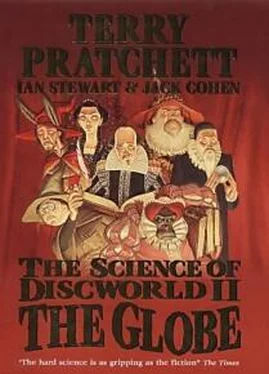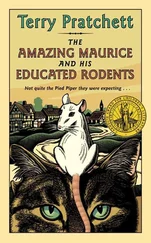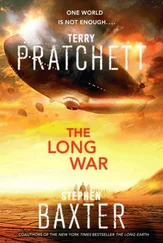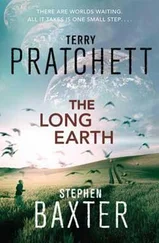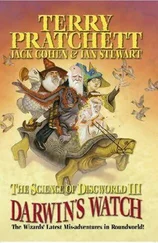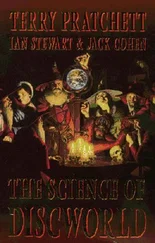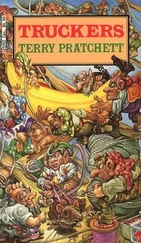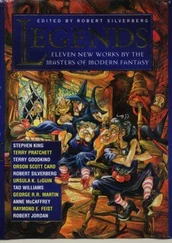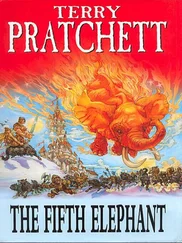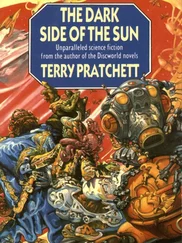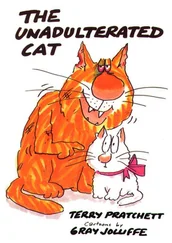Terry Pratchett - The Globe
Здесь есть возможность читать онлайн «Terry Pratchett - The Globe» весь текст электронной книги совершенно бесплатно (целиком полную версию без сокращений). В некоторых случаях можно слушать аудио, скачать через торрент в формате fb2 и присутствует краткое содержание. Жанр: Фантастика и фэнтези, на английском языке. Описание произведения, (предисловие) а так же отзывы посетителей доступны на портале библиотеки ЛибКат.
- Название:The Globe
- Автор:
- Жанр:
- Год:неизвестен
- ISBN:нет данных
- Рейтинг книги:3 / 5. Голосов: 1
-
Избранное:Добавить в избранное
- Отзывы:
-
Ваша оценка:
- 60
- 1
- 2
- 3
- 4
- 5
The Globe: краткое содержание, описание и аннотация
Предлагаем к чтению аннотацию, описание, краткое содержание или предисловие (зависит от того, что написал сам автор книги «The Globe»). Если вы не нашли необходимую информацию о книге — напишите в комментариях, мы постараемся отыскать её.
The Globe — читать онлайн бесплатно полную книгу (весь текст) целиком
Ниже представлен текст книги, разбитый по страницам. Система сохранения места последней прочитанной страницы, позволяет с удобством читать онлайн бесплатно книгу «The Globe», без необходимости каждый раз заново искать на чём Вы остановились. Поставьте закладку, и сможете в любой момент перейти на страницу, на которой закончили чтение.
Интервал:
Закладка:
"Well, technically yes, sir, but I think that might be abusing the—'
'We are academics, Stibbons,' said the Dean. 'And information should be allowed to flow freely.'
'Exactly,' said the Lecturer in Recent Runes. 'An untrammelled flow of information is essential to a progressive society. This is the age of the semaphore, after all.'
'Obviously it flows to us,' said Ridcully.
'Oh, certainly,' said the Dean. 'We don't want it flowing away from us. We're talking about flow here, not spread.'
'You wanted a message sent?' said Ponder, before the wizards got too deeply into this.
'And we really don't have to pay?' said Ridcully.
Ponder sighed. 'No, sir.'
'Jolly good,' said the Archchancellor. 'Have this one sent to the kingdom of Lancre, will you?
They've only got one clacks tower. Got your notebook? Message begins:
"To Mistress Esmerelda Weatherwax. How are you? I am fine. An interesting problem has arisen ..."
BIT FROM IT
A semaphore is a simple and time-honoured example of a digital communication system. It encodes letters of the alphabet using the positions of flags, lights, or something similar. In 1795
George Murray invented a version that is close to the system currently used in Discworld: a set of six shutters that could be opened or closed, thus giving 64 different 'codes', more than enough for the entire alphabet, numbers 0 to 10 and some 'special' codes. The system was further developed but ceased to be cutting-edge technology when the electric telegraph heralded the wired age. The Discworld semaphore (or 'clacks') has been taken much further, with mighty trunk route towers carrying bank after bank of shutters, aided by lamps after dark, and streaming messages bi-directionally across the continent. It is a pretty accurate 'evolution' of the technology: if we too had failed to harness steam and electricity, we might well be using something like it ...
There is enough capacity on that system even to handle pictures -seriously. Convert the picture to a 64 x 64 grid of little squares that can be black, white or four shades of grey, and then read the grid from left to right and top to bottom like a book. It's just a matter of information, a few clever clerks to work out some compression algorithms, and a man with a shallow box holding
4,096 wooden blocks, their six sides being, yes, black, white and four shades of grey. It'll take them a while to reassemble the pictures, but clerks are cheap.
Digital messages are the backbone of the Information Age, which is the name we currently give to the one we're living in, in the belief that we know a lot more than anyone else, ever. Discworld is comparably proud of being in the Semaphore Age, the Age of the Clacks. But what, exactly, is information?
When you send a message, you are normally expected to pay for it -because if you don't, then whoever is doing the work of transmitting that message for you will object. It is this feature of messages that has got Ridcully worried, since he is wedded to the idea that academics travel free.
Cost is one way to measure things, but it depends on complicated market forces. What, for example, if there's a sale on? The scientific-concept of 'information' is a measure of how much message you're sending. In human affairs, it seems to be a fairly universal principle that for any given medium, longer messages cost more than short ones. At the back of the human mind, then, lurks a deep-seated belief that messages can be quantified: they have a size. The size of a message tells you 'how much information' it contains.
Is 'information' the same as 'story'? No. A story does convey information, but that's probably the least interesting thing about stories. Most information doesn't constitute a story. Think of a telephone directory: lots of information, strong cast, but a bit weak on narrative. What counts in a story is its meaning. And that's a very different concept from information.
We are proud that we live in the Information Age. We do, and that's the trouble. If we ever get to the Meaning Age, we'll finally understand where we went wrong.
Information is not a thing, but a concept. However, the human tendency to reify concepts into things has led many scientists to treat information as if it is genuinely real. And some physicists are starting to wonder whether the universe, too, might be made from information.
How did this viewpoint come about, and how sensible is it?
Humanity acquired the ability to quantify information in 1948, when the mathematician-turnedengineer Claude Shannon found a way to define how much information is contained in a message -he preferred the term signal -sent from a transmitter to a receiver using some kind of code. By a signal, Shannon meant a series of binary digits ('bits', 0 and 1) of the kind that is ubiquitous in modern computers and communication devices, and in Murray's semaphore. By a code, he meant a specific procedure that transforms an original signal into another one. The simplest code is the trivial 'leave it alone'; more sophisticated codes can be used to detect or even correct transmission errors. In the engineering applications, codes are a central issue, but for our purposes here we can ignore them and assume the message is sent 'in plain'.
Shannon's information measure puts a number to the extent to which our uncertainty about the bits that make up a signal is reduced by what we receive. In the simplest case, where the message is a string of 0s and 1s and every choice is equally likely, the amount of information in a message is entirely straightforward: it is the total number of binary digits. Each digit that we receive reduces our uncertainty about that particular digit (is it 0 or 1?) to certainty ('it's a 1', say) but tells us nothing about the others, so we have received one bit of information. Do this a thousand times and we have received a thousand bits of information. Easy.
The point of view here is that of a communications engineer, and the unstated assumption is that we are interested in the bit-by-bit content of the signal, not in its meaning. So the message
111111111111111 contains 15 bits of information, and so does the message 111001101101011.
But Shannon's concept of information is not the only possible one. More recently, Gregory Chaitin has pointed out that you can quantify the extent to which a signal contains patterns. The way to do this is to focus not on the size of the message, but on the size of a computer program, or algorithm, that can generate it. For instance, the first of the above messages can be created by the algorithm 'every digit is a 1'. But there is no simple way to describe the second message, other than to write it down bit by bit. So these two messages have the same Shannon information content, but from Chaitin's point of view the second contains far more 'algorithmic information'
than the first.
Another way to say this is that Chaitin's concept focuses on the extent to which the message is
'compressible'. If a short program can generate a long message, then we can transmit the program instead of the message and save time and money. Such a program 'compresses' the message.
When your computer takes a big graphics file -a photograph, say -and turns it into a much smaller file in JPEG format, it has used a standard algorithm to compress the information in the original file. This is possible because photographs contain numerous patterns: lots of repetitions of blue pixels for the sky, for instance. The more incompressible a signal is, the more information in Chaitin's sense it contains. And the way to compress a signal is to describe the patterns that make it up. This implies that incompressible signals are random, have no pattern, yet contain the most information. In one way this is reasonable: when each successive bit is maximally unpredictable, you learn more from knowing what it is. If the signal reads
Читать дальшеИнтервал:
Закладка:
Похожие книги на «The Globe»
Представляем Вашему вниманию похожие книги на «The Globe» списком для выбора. Мы отобрали схожую по названию и смыслу литературу в надежде предоставить читателям больше вариантов отыскать новые, интересные, ещё непрочитанные произведения.
Обсуждение, отзывы о книге «The Globe» и просто собственные мнения читателей. Оставьте ваши комментарии, напишите, что Вы думаете о произведении, его смысле или главных героях. Укажите что конкретно понравилось, а что нет, и почему Вы так считаете.
